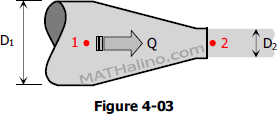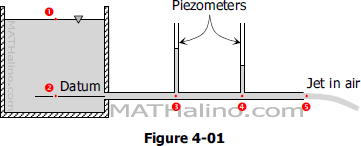Problem 06 - Bernoulli's Energy Theorem
Problem 6
As shown in Figure 4-03, the smaller pipe is cut off a short distance past the reducer so that the jet springs free into the air. Compute the pressure at 1 if Q = 5 cfs of water. D1 = 12 inches and D2 = 4 inches. Assume that the jet has the diameter D2, that the pressure in the jet is atmospheric and that the loss of head from point 1 to point 2 is 5 ft of water.
- Read more about Problem 06 - Bernoulli's Energy Theorem
- Log in to post comments



